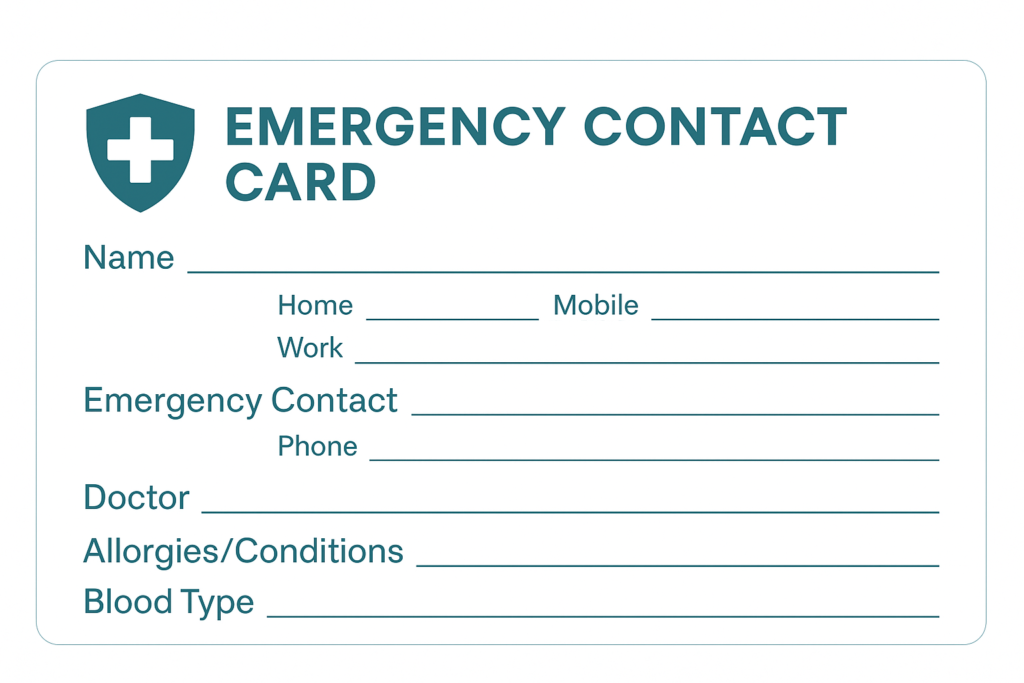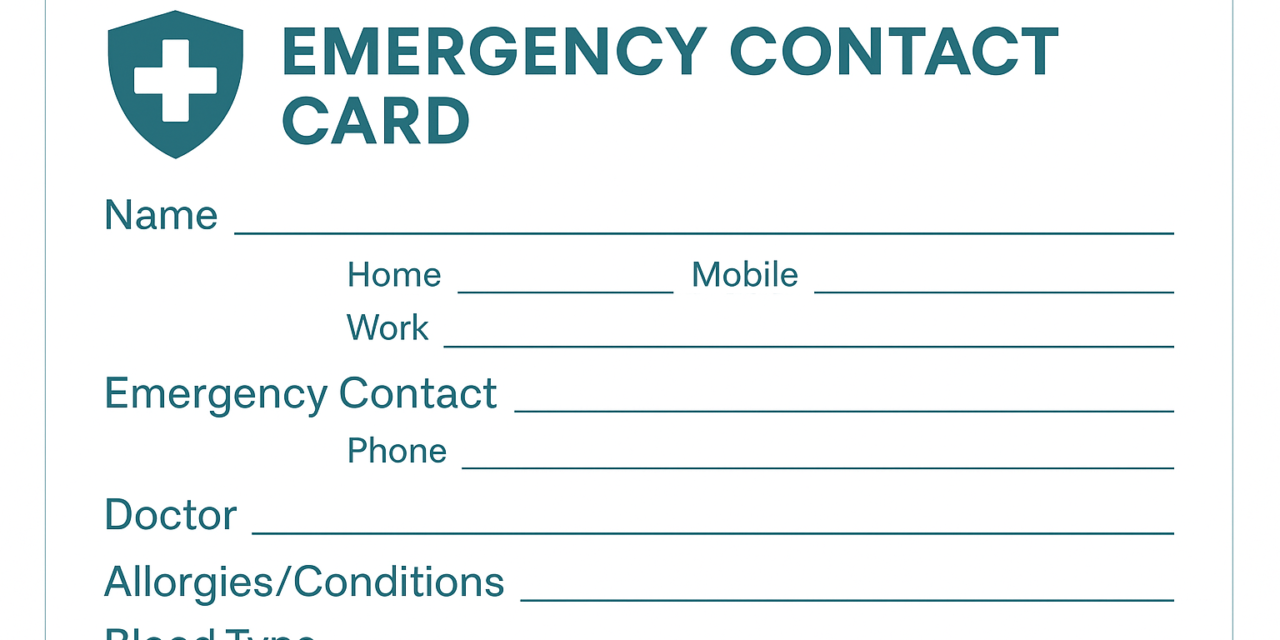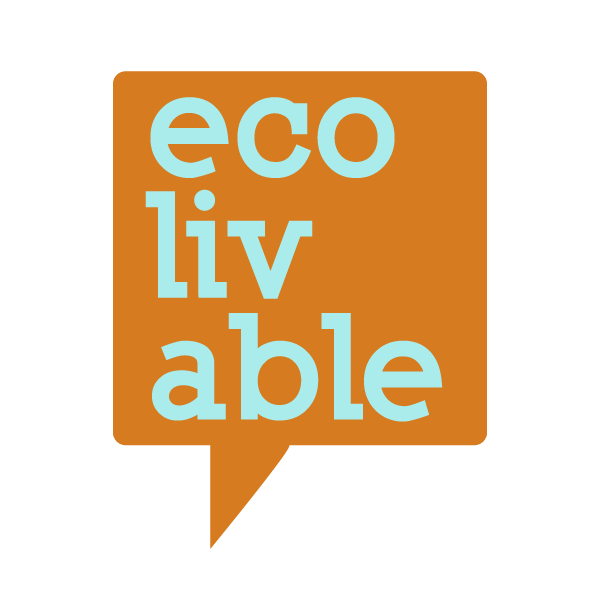When emergencies happen, every second counts. Whether it’s a car accident, sudden illness, or natural disaster, having critical information on hand can make all the difference in how quickly you receive help — and how effectively first responders can act. That’s where the Emergency Contact Card comes in.
This small, wallet-sized document might look simple, but it’s one of the most powerful preparedness tools you can carry. It ensures that vital information — your identity, medical conditions, and emergency contacts — is available even if you are unable to communicate.
In this article, we’ll cover why an emergency contact card is important, what to include, and how to make one that could save your life.
What is an Emergency Contact Card?
An emergency contact card is a small, durable card (often the size of a credit card) that contains your essential personal and medical details. You carry it in your wallet, purse, or bag so it’s always accessible.
Think of it as your voice in an emergency when you can’t speak for yourself. First responders, hospital staff, or even helpful bystanders can quickly find it and take action based on the information provided.

Why an Emergency Contact Card is Essential
Here are the top reasons everyone — adults, children, and even seniors — should have one:
1. Immediate Access to Critical Information
If you’re unconscious or disoriented, first responders don’t have time to search your phone for contacts. A physical card in your wallet provides instant, visible access to your information.
2. Faster Medical Care
Details like allergies, current medications, and medical conditions can help doctors make life-saving treatment decisions without dangerous delays.
3. Peace of Mind for Loved Ones
Knowing that emergency responders can quickly contact your spouse, parent, or friend brings peace of mind to everyone in your life.
4. Works When Technology Fails
Phones can be locked, lost, or damaged during emergencies. A laminated, physical card doesn’t rely on battery life or signal.
5. Perfect for Travel and Outdoor Activities
Whether you’re hiking, camping, or traveling internationally, an emergency contact card ensures your information is available in unfamiliar situations.
What to Include on Your Emergency Contact Card
A well-prepared card should have:
- Your full name
- Primary phone number (mobile or home)
- Emergency contact name and number
- Doctor’s name and number
- Any allergies (medications, foods, etc.)
- Medical conditions (diabetes, heart issues, etc.)
- Current medications
- Blood type (optional, but helpful)
- Insurance provider (optional)
Tips for Making Your Card Effective
- Keep it simple — use clear, legible font and avoid clutter.
- Laminate it to protect against water or wear.
- Carry it everywhere — in your wallet, bag, or even in your child’s school backpack.
- Update it regularly — change phone numbers or medical info as needed.
- Make extras — one for your wallet, one for your vehicle, one for your bug-out bag.
Who Needs an Emergency Contact Card?
- Children — in case they get separated from parents.
- Elderly individuals — especially those with memory issues.
- People with chronic health conditions.
- Outdoor enthusiasts — hikers, campers, and bikers.
- Frequent travelers — both domestic and international.
Get Your Free Downloadable Emergency Contact Card
We’ve created a free, printable Emergency Contact Card you can customize with your details.
Download it, fill it out, and carry it with you — it might be the most important thing in your wallet.
📥 Download Your Free Emergency Contact Card


